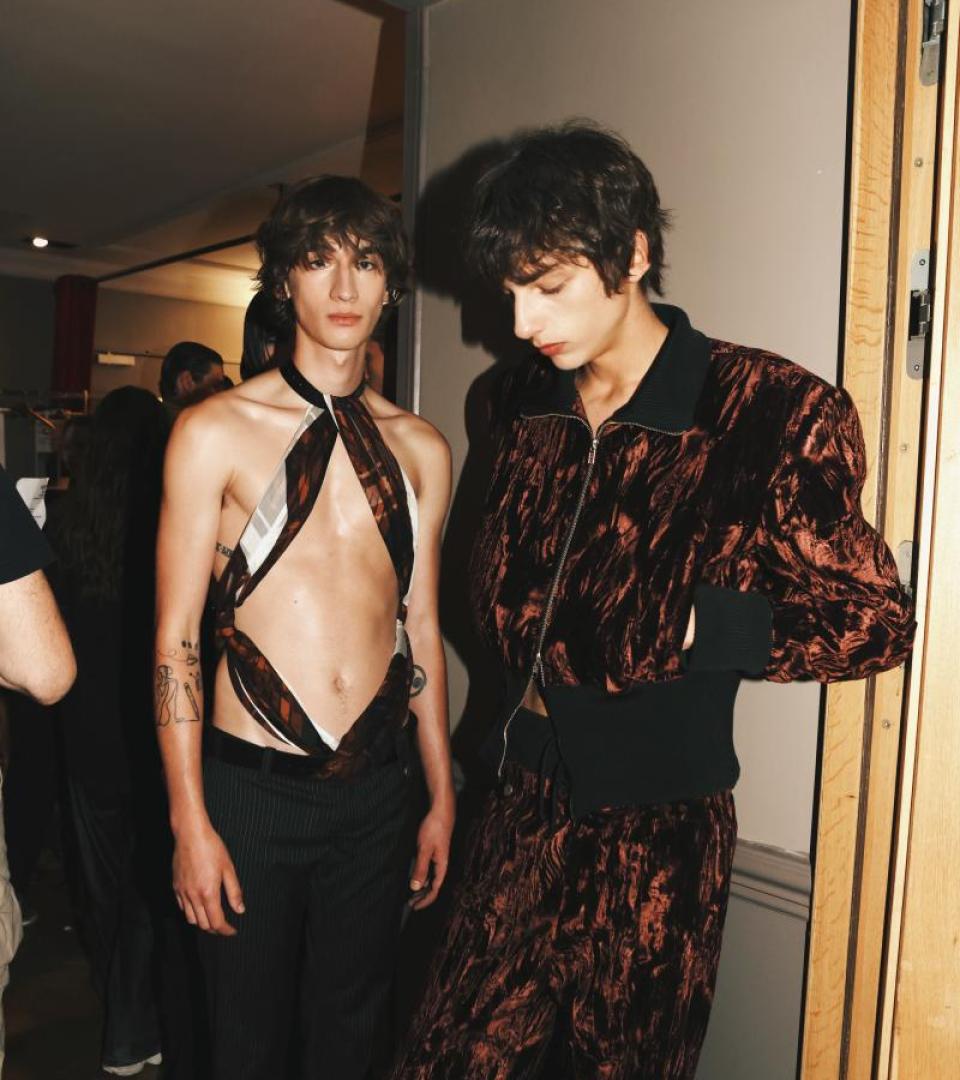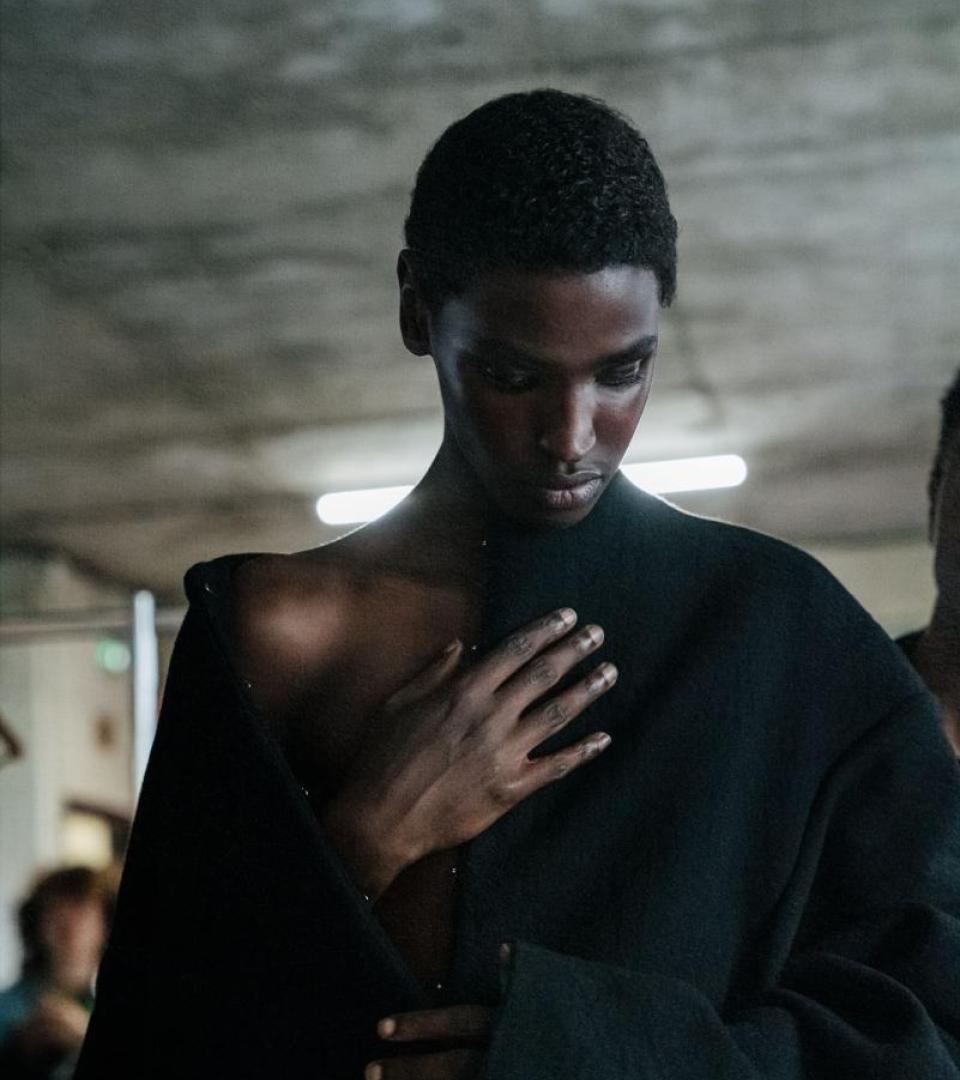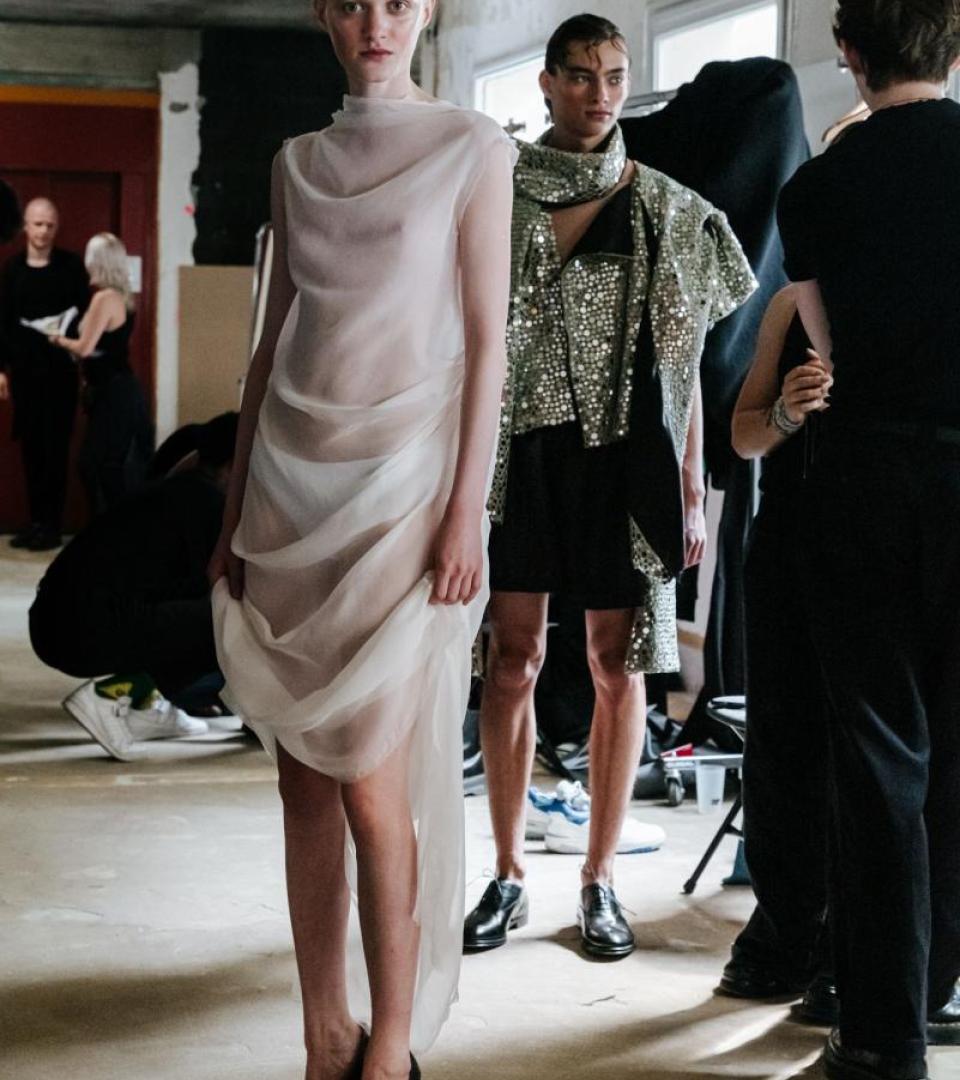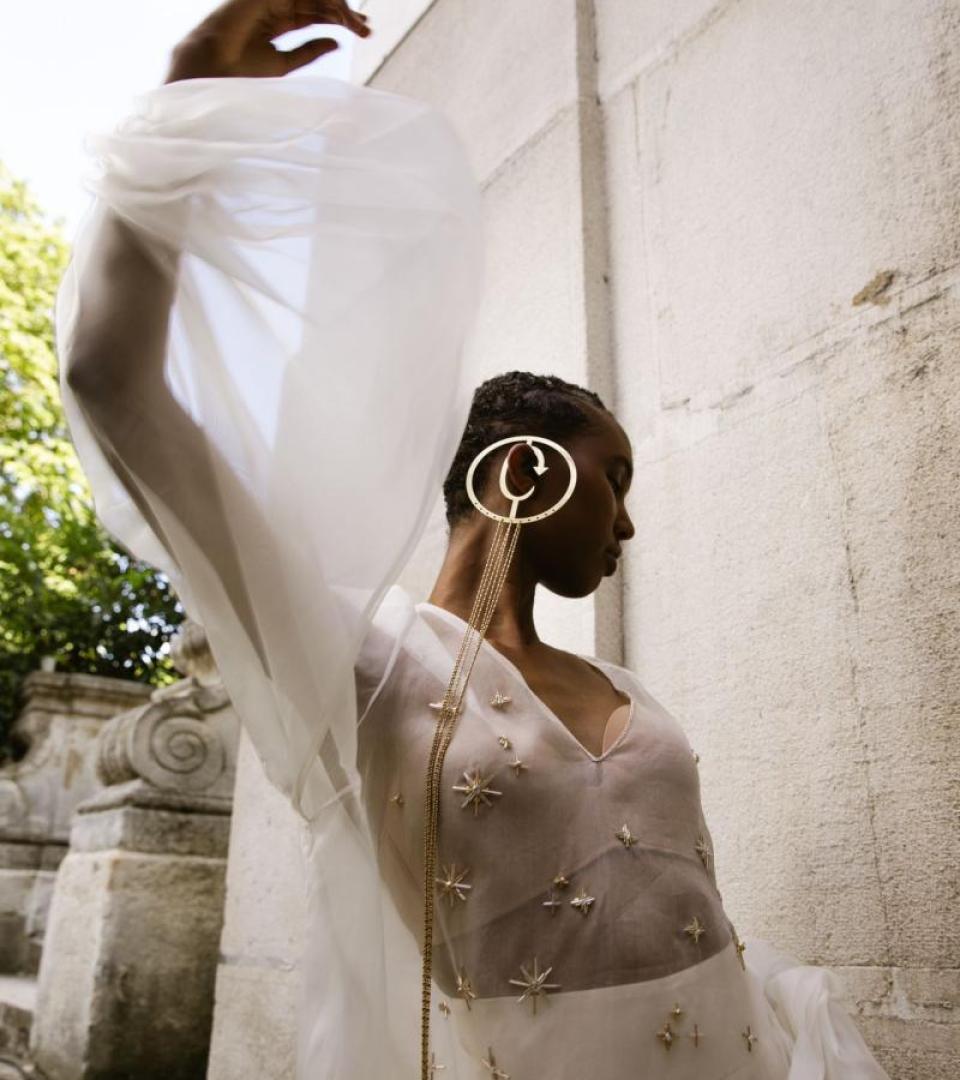Julie de Libran's Worldly Débutantes
Julie de Libran’s débutantes are not beginners. At her Fall-Winter 2023 haute couture show, in front of a selected audience of press, clients, and friends, daughters of the designer’s friends coasted through the salubrious confines of her Paris home. ‘Nepotism babies’ they may be but de Libran wanted the next generation to impart her lightweight taffeta dresses and slick tuxedo jackets with a sense of their self-assurance and forthrightness in how they dress.
As they snaked around her verdant garden and into her well-appointed living quarters, the young women emerged in elegant evening wear and perfunctory daywear including poplin separates and a smattering of tailoring. De Libran took sartorial cues from the upcoming generation and their carefree and often restless approach to styling: a black and gold sequin dress with a scooped neckline reveals a bathing suit – a newly introduced category – enclosed with a jewel detail. Poplin shorts riff on men’s boxer shorts, affirming the dissolution of gender boundaries. Yoga leggings poke out underneath voluminous taffeta dresses. The collection is rounded out with some classic tailoring and sequined gowns, in de Libran’s signature navy, black and gold. Her desired impact is to show audiences how clothing, best observed as heirlooms, can transfer from generation to generation.
“Fashion is about understanding who women are today but also about pushing them to try different things and the kindness to let them explore who they are. [The women that I design for] are so busy but they love fashion so it’s very special for me to spend time with them,” said de Libran, the morning after her show.
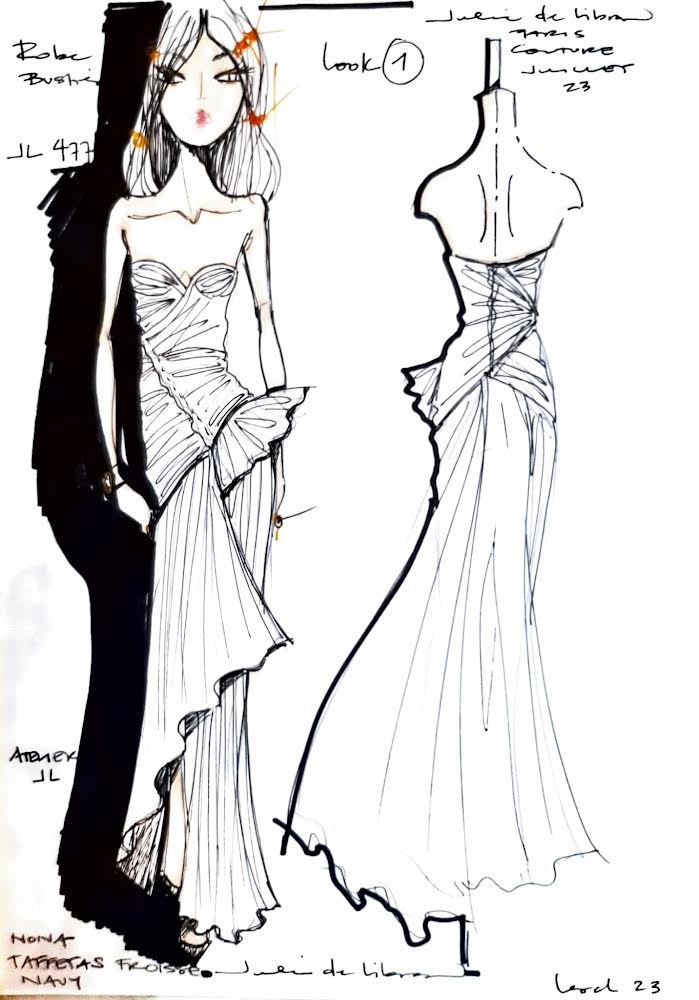
How did you begin this collection?
The starting point is always about what’s going on in the world, what women are doing and how they’re dressing. It’s also about life which is what fashion is about. I work in a responsible way – we don’t like to have any waste – and I like to stay true to the savoir faire here in Paris and celebrate French craftsmanship. This collection has details of quiet luxury which is an interesting trend to me because it’s true to my values. I’m quite a discreet person and I don’t like my clothing to have logos; I prefer things that are quieter and more elegant.
The collection is shown on girls who have never walked before and some young models. I’m surrounded by these young girls who are getting their start in the world, mostly because I’m friends with their mothers. One of them is my niece who has just graduated from high school and is about to start university in Scotland. Two girls are daughters of an old friend from when I lived in California. It’s lovely to be around the new generation and listening to their inspirations and how they find ways to be included in fashion. For me, I wanted to show them Paris craftsmanship, the versatility of layering, and how clothing can be worn across generations, as well as passed down to younger generations.
How has your process evolved over the years?
I’ve been in the industry for many years and I’ve had the opportunity to be in many ateliers that are technical and disciplined. My brand turns four this month. We’re a small, personal, family-owned business with a wonderful clientele who have followed me over the years and prompted me. Last year, we opened a boutique and atelier in St-Germain-des-Près which is by appointment. It allows me to interact with my clients, to understand what they like, and exchange ideas.
We’ve also been developing new categories like a yoga material that we used in pants under the dresses and bathing suits with a jewelled closure that we’ve styled with tuxedo jackets. We’re continuing to expand our gloves made by Causse. With that, in particular, it’s exciting to share that history of craft with the next generation.
When developing the collection, how much are you thinking about its commerciality?
I am attentive to commerciality. I was trained at the school of Prada for 10 years where we were making creative, beautiful clothes that were designed to be worn. [Commerciality] was a positive thing there. I don’t think it becomes fashion until it's worn. I meet women all the time who work, who live active lives, and they need clothes that don’t overwhelm them. They need something that brings them power, force, and makes them feel comfortable. More and more, women are sensitive to what they’re buying; they want to know the provenance; they don’t want waste. Commerciality, to me, means that they will come back happy and will want to build their wardrobe each season.
Where would you like to see change in fashion this season and beyond?
There is always so much change in fashion. The industry moves so quickly that we just have to adapt to it. I wanted to show the young girls in the show that it’s not just about social media. It can be great but sometimes it can be a lot, especially for young women finding their way in the world. I wanted them to feel the craftsmanship of the clothing and see it as something that can last forever.
This interview has been lightly edited.
